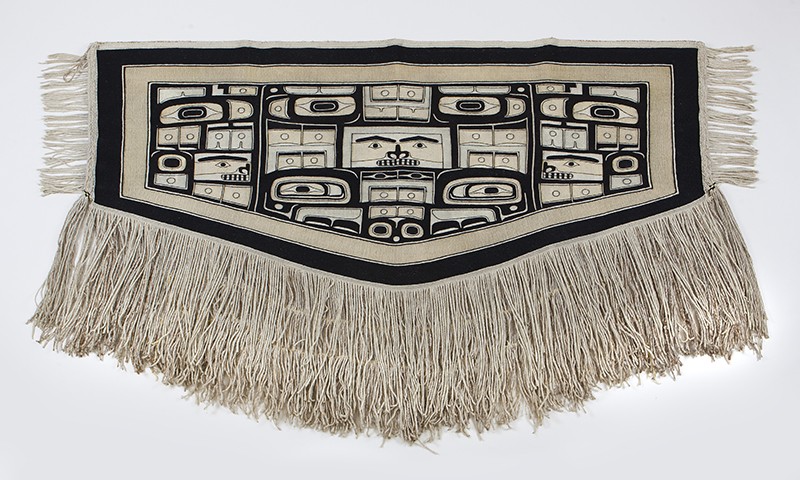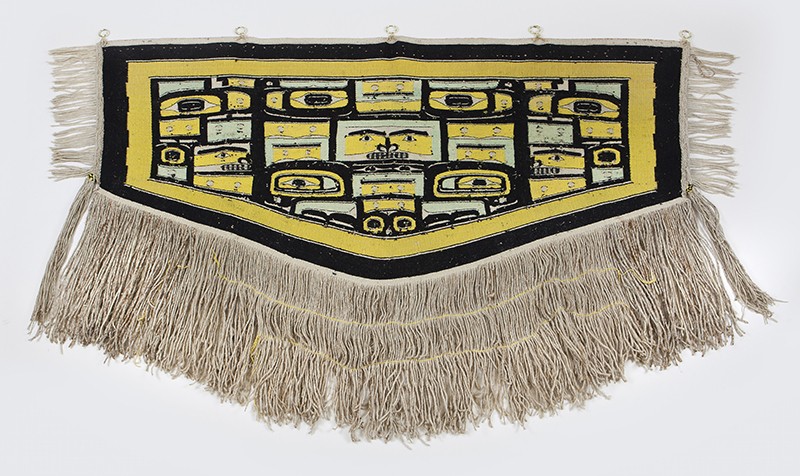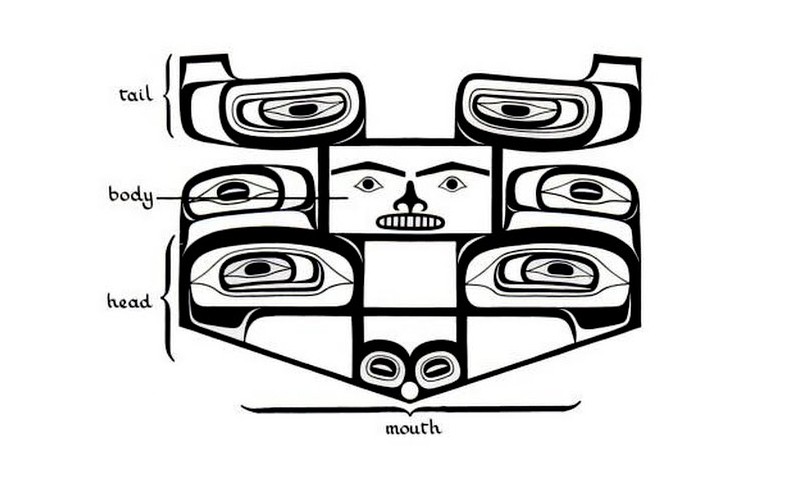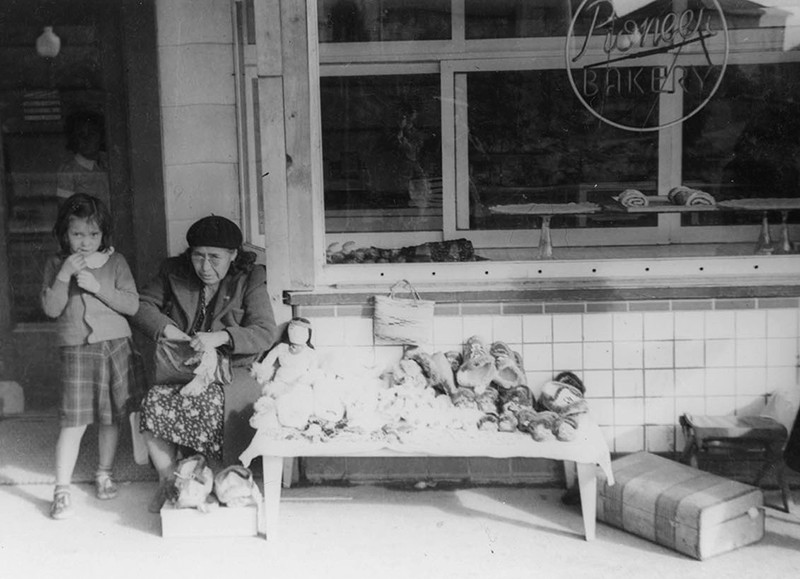 |
Blanket, early 20th Century
Maggie Kadanaha (Chilkat Tlingit, 1873-1959); Alaska, Northwest Coast, United States of America
Mountain goat’s wool with cedar bark warp strands and pigment; 54 × 74 × 1 in.
2016.14.1
Gift of the Herbert W. Clark Trust |
Alaska For Directions
At the turn of the 20th Century the Chilkat Tlingit lived along the painfully stark and beautiful riverbeds of the similarly named Alaskan Chilkat River. Less than fifty years prior the state had been purchased from Russia in what is now considered the wisest folly related to U.S. land acquisition. Small outposts and forts dotted the Alaskan coast, mostly stops on the pilgrimage gold-minded miners took to get to the Klondike. Right around when the state was purchased, the Chilkat Tlingit had begun to weave incredibly intricate blankets from a cedar bark weft and wool. Originally worn at feasts and other prestigious occasions, weavers began to make Chilkat blankets to sell at these outposts. This post explores one such Chilkat blanket in the Bowers Museum’s collections, looking at the history, craft, and provenance of the blanket.
 |
| Reverse of 2016.14.1 |
Passed Down, Passed Away
Per the oral tradition of the Chilkat Tlingit, the blankets were first produced by Tsimshian tribe of the Northwest Coast. During the middle of the 19th Century, the Tsimshian slowly stopped weaving these blankets, but imparted their knowledge to Chilkat weavers. Why exactly this transition occurred is not well-understood, but the design was adopted into Chilkat culture. With increased tourism to Alaska, weavers noticed an opportunity to sell the blankets to a larger market, and the Chilkat became inseparably associated with these blankets to the point that the blankets themselves are now erroneously called Chilkats. Despite being made for sale, the blankets are immensely difficult and time-consuming to create. A single blanket may take up to two years of periodic work to complete. The result is that not many Chilkat blankets were produced, even at the height of production. The original weavers were also a small community of women of the Chilkat tribe and much of the original process was lost with their passing in the mid 20th Century.
 |
| A Chilkat weaver working on a blanket. Taken from Alaska Days with John Muir by Samuel Hall Young. |
Blanket with a Bark Weft
This Chilkat blanket was made from mountain goat wool spun over a cord of cedar-bark string. According to indigenous traditions and weather permitting, the materials were always harvested in the Spring. These were also used as regalia during ceremonies, worn on special occasions such as potlatch, where they might be presented to guests of honor; in dancing; or occasionally hung on the outside of a grave house to pay honor towards a newly deceased chief or person of high rank in Chilkat Tlingit society. Potlatch is a large celebration which often traditionally took more than a year to plan and fund. The gathering traditionally took place for a milestone event, such as a marriage, birth, death, or coming of age festivity. Chilkats blankets were usually a main piece of regalia brought out for the dancers to wear to impress the guests.
 |
| Breakdown of the diving whale design from The Chilkat Dancing Blanket by Cheryl Samuel. |
Formlines
The patterns chosen for these weavings are very purposeful and designate central space on the blanket for depictions of highly stylized and geometric patterns of animals native to the Northwestern region of North America. The central designs of Chilkat blankets are always created from formlines, a rigid framework of designs with a longstanding legacy of usage by Northwest Coast groups. Specific blankets also tend to draw upon designs related to family histories. This design is perhaps the most common Chilkat blanket design: the diving whale. Oriented with its head at the bottom of the blanket, its blowhole and body represented by the face in the center of the blanket, and the tail by two flippers, the design is best-spotted if one is familiar enough with Chilkat art to be able to identify the designs which are and are not formlines.
 |
| The blanket's weaver, Maggie Kadanaha. |
The Artist
Quite a bit is known about the provenance of this Chilkat blanket as well. A letter from the previous owner notes that it was woven and purchased directly from Maggie Kadanaha, a well-establish Chilkat weaver, at Fort Seward, Alaska in 1912. The blanket was traded for $50.00 and one of the donor’s finest dresses, a story that resonates with the provenance records of Kadanaha blankets in other museum collections. Maggie Kadanaha was married to Mike Kadanaha of the Killer Whale House—likely the impetus behind the design seen on this blanket.
Text and images may be under copyright. Please contact Collection Department for permission to use. References are available on request. Information subject to change upon further research.






Comments